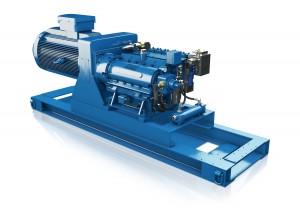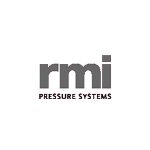How to match the correct pump to your application
Pump designs fall mainly into two categories, centrifugal and reciprocating (piston) type, each with its own benefits and constraints. Mike Sherman, Marketing Manager at RMI Pressure Systems, looks at the design criteria and some of the applications.
Matching the correct pump to the application
The key to matching the correct design of pump to an application is firstly having all the necessary information relating to the application and the fluids involved.
Which applications for Centrifugal Pumps?
The centrifugal pump is the most common design in the world, using a simple principle to produce a robust, effective and relatively inexpensive pump. Using an impeller, located in a volute, the fluid is pressurised by transferring the mechanical energy of the motor to the impeller and increasing the velocity of the fluid and consequently the pressure increases.
However, centrifugal pumps are typically used for applications where a lower system pressure is required and therefore would not normally be considered suitable for high pressure applications.
Pumps for high pressure applications
A reciprocating pump discharges liquid by changing the internal volume of the pump and uses non-return valves (NRVs) at both the inlet and outlet ports of the pump.
Typically these pumps can produce 1000 bar in pressure, however, specialist, ultra high pressure pumps, capable of more than 7,000 bar are available.
The benefits of the reciprocating pump is that it produces a fixed volume of fluid displacement at a given speed and provides a constant flow, regardless of pressure. This means that variable capacity can be achieved by changing the pump speed. In contrast, the centrifugal pump would be forced up and down the performance curve, varying the flow which may cause problems for the application.
Due to the fundamental design of the reciprocating pump, it is more often controlled by a variable speed controller which allows accurate control of the output pressure.
For applications requiring increased flow rates, one or more pumps can be added in parallel to the original to produce the desired flow rate at the same pressure rating.
Why is pump design important?
One crucial aspect of pump design is the associated piping and connections, which can cause serious problems if the system has been poorly designed. Cavitation is one of the more common issues that arise when pressurising fluids and this can cause severe pressure spikes that cause damage to internal pump components. Additional issues include vibration and noise, which can also impact the working environment if the pump design has not been fully tested and commissioned correctly.
As a leading high pressure pump specialist, RMI Pressure Systems understands the many and varies demands of high pressure pumping applications. With over 100 years experience in producing premium quality, high pressure pumps for a wide range of industrial applications - including mining, steel production and oil & gas - RMI regularly delivers bespoke pumping solutions into demanding working environments.
Watch this pump overview video to really understand the quality and experience of RMI’s pump design.
Get the latest process industry news
Interested in receiving even more industry-leading news from Process Industry Forum delivered directly to your inbox? Then sign up to our free newsletter. Bringing you the latest news, trends, innovations and opinion from across the process industry, our exclusive newsletter gives you all the industry insights of the moment in one, easy-to-digest bulletin. Stay ahead of the competition with regular process industry news instalments from PIF.


